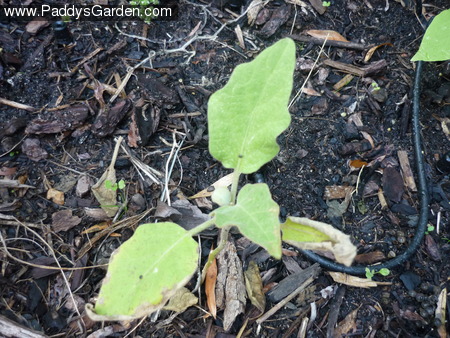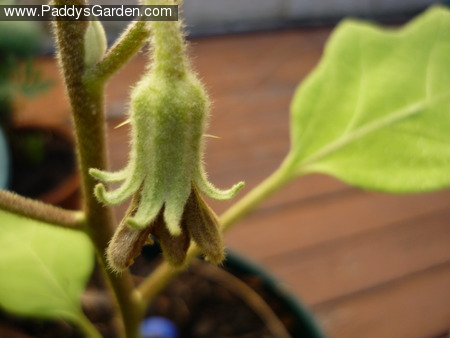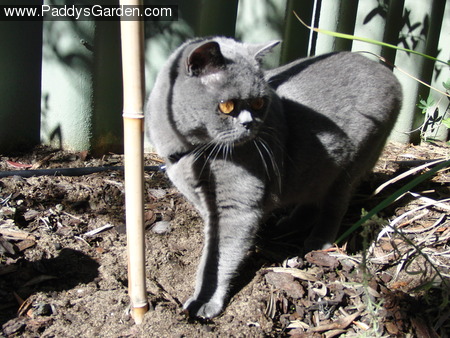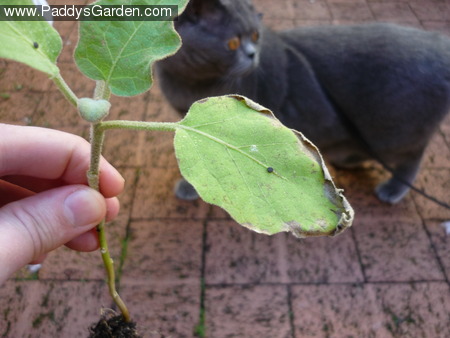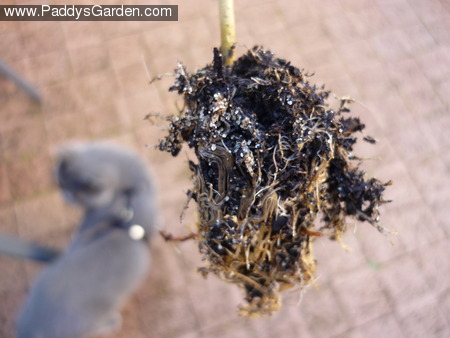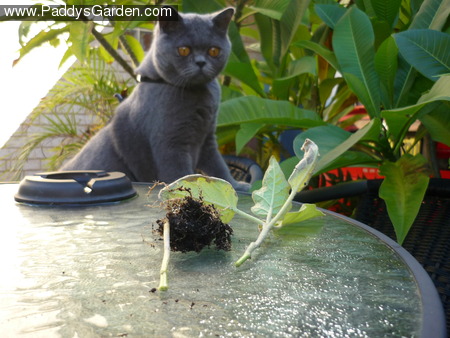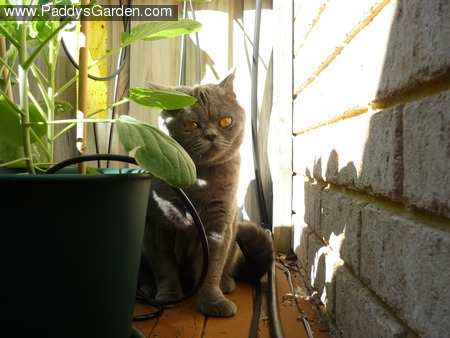Paddy says it should be called be Paddy’s Mystery Garden because our eggplants seem to be affected by a curse.
We have tried three separate sets of healthy eggplant seedlings from Bunnings a season apart. Each time the seedlings appear to take root strongly in the garden bed and grow to about 6 leaves. At this point the lowest leaves start to discolour to a burnt orange and then fall off the plant. The eggplants keep up this battle of growing new leaves before they drop off for a few weeks before finally all the leaves fall off and the plant is dead.
Paddy”s research showed that eggplants can suffer from quite a few different pests and diseases so he put on his lab coat and came up with the idea of growing a control group of the same eggplant seedings in pots. This way we could see if it was something to do with the soil in the garden bed. So far all the eggplants in pots are doing well and one is even flowering.
 One common problem in garrden beds is root knot nematodes. These little creatures are truly scary things but luckily too small to make any difference to humans. If you like a good night’s sleep just keep reading but if you want a horror story in your back yard, read about root knot nematodes at Wikipedia.
One common problem in garrden beds is root knot nematodes. These little creatures are truly scary things but luckily too small to make any difference to humans. If you like a good night’s sleep just keep reading but if you want a horror story in your back yard, read about root knot nematodes at Wikipedia.
 7 Million Live Beneficial Nematodes-Kills over 230 Bugs
7 Million Live Beneficial Nematodes-Kills over 230 Bugs
Whilst digging around in Paddy’s Garden we’ve also noticed that the last lot of mulch we got is making a lot of mushrooms and some white mold as it decays. while this is not in itself a problem, we thought this could be a sign of root knot nematode being present in the soil. As it turns out it’s the reverse situation and applying plenty of organic matter is actually the recommended solution if you do have an abundance of root knot nematode.
Anyway, the easiest way to tell if your garden has the dreaded nematode is to pull up the affected plant and check and see if it’s roots are all knotted. We decided we couldn’t bare to watch each plant wither away to nothing again, so we pulled them up to take a look.
Wikipedia has a great photo of a plant that is affected by root knot nematode to compare and we were easily able to determine that the roots don’t seem bulbous enough to indicate any kind of root knot nematode.
The other plant had a better developed root system and still no sign of root knot nematode.
The next most common problem (with similar symptoms) is powdery mildew. The leaves of the eggplants definitely do seem to be withering and dying and they do have a powdery feel to them. The disease does seem to move progressively thorough the plants and this is apparently a sign of powdery mildew being transfered from plant to plant by sucking insects.
 Home Vegetable Gardening: A Complete and Practical Guide to the Planting and Care of All Vegetables, Fruits and Berries Worth Growing for Home Use (Forgotten Books)
Home Vegetable Gardening: A Complete and Practical Guide to the Planting and Care of All Vegetables, Fruits and Berries Worth Growing for Home Use (Forgotten Books)
Paddy’s trusty guide for identifying what ails your plant speaks about identifying diseased plants by cutting and looking for discolouration in the stem..
Once again, it seems we’re on the wrong track as the stems looked perfectly normal.
And thats the mystery… we don”t have any idea what it was – but the diseased plants have been disposed of so it’s not a problem any more. In the mean time Paddy says we will just have to keep the remaining eggplants in pots…
If your garden is suffering a mystery disease or ailment, try using this custom search to get some ideas. You’ll need to enter something to get the ball rolling so try entering a symptom such as leaf wilting or root rot


